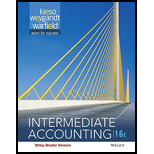
Lease: A contractual arrangement between the owner of the asset and the user of the asset for a fixed amount of money is termed lease. In this contract the owner of the asset permits the user to use the property for a fixed sum of money received at the time of handing over the asset. At the end of the contract tenure the user of the asset need to return the asset to the owner. The parties involved in the contract are termed the lessor the owner of the asset and the lessee the user of the asset.
Sale and leaseback lease:
- (a) The owner of the asset sells the property or asset in the market with an agreement to lease back the same for a specific amount.
- (b) The sale of the asset or property may be less or more than the market or fair value of the asset.
- (c) The ownership of the asset gets transferred and the current owner of the asset becomes the lessor.
- (d) The income of the lessee should get amortized within the tenure of the lease.
- (e) The losses incurred due to the leased asset should be adjusted in the current year.
- (f) The
depreciation -related expenses are treated based on the nature of the asset and generally over the economic life of the asset.
Case summary: P Corporation sold an asset and leased back the same for 8 years. The property title alone is transferred; the usage right was with P Corporation. It also gained some amount out of the sale of equipment.
(a)
To determine the reason for capitalizing the long-term lease.
(b) (1)
To determine the procedure of accounting the sale and leaseback transactions.
(b)(2)
To determine the way to record the lease of the equipment.
(c)
To determine the process of amortizing the gain from the sale and leaseback transaction.
Want to see the full answer?
Check out a sample textbook solution
Chapter 21 Solutions
Intermediate Accounting, Binder Ready Version
- Smith plc commenced two projects on 1 January 2023. The following details relate to them as at 31 December 2023. Cost to date Progress billings invoiced Progress billings received Estimated future costs Estimated final contract price Project 1 Project 2 ₤'000 ₤'000 380 110 290 70 210 55 120 320 650 430 Smith plc uses the percentage completion method based on costs (cost to date/total costs) to account for construction contracts. The policy of Smith plc is that project outcomes can only be reliably measured when a project is at least 35% complete. Required a. Illustrate the five-step method under the IFRS 15 Revenue from Contracts with Customers.arrow_forwardCan you solve this general accounting problem with appropriate steps and explanations?arrow_forwardPlease explain the correct approach for solving this general accounting question.arrow_forward
- no chatgpAccumulated Depreciation will appear as a deduction within the section of the balance sheet labeled as Property, Plant and Equipment. True Falsearrow_forwardNo ai Depreciation Expense is shown on the income statement in order to achieve accounting's matching principle. True Falsearrow_forwardno aiOne company might depreciate a new computer over three years while another company might depreciate the same model computer over five years...and both companies are right. True Falsearrow_forward

 AccountingAccountingISBN:9781337272094Author:WARREN, Carl S., Reeve, James M., Duchac, Jonathan E.Publisher:Cengage Learning,
AccountingAccountingISBN:9781337272094Author:WARREN, Carl S., Reeve, James M., Duchac, Jonathan E.Publisher:Cengage Learning, Accounting Information SystemsAccountingISBN:9781337619202Author:Hall, James A.Publisher:Cengage Learning,
Accounting Information SystemsAccountingISBN:9781337619202Author:Hall, James A.Publisher:Cengage Learning, Horngren's Cost Accounting: A Managerial Emphasis...AccountingISBN:9780134475585Author:Srikant M. Datar, Madhav V. RajanPublisher:PEARSON
Horngren's Cost Accounting: A Managerial Emphasis...AccountingISBN:9780134475585Author:Srikant M. Datar, Madhav V. RajanPublisher:PEARSON Intermediate AccountingAccountingISBN:9781259722660Author:J. David Spiceland, Mark W. Nelson, Wayne M ThomasPublisher:McGraw-Hill Education
Intermediate AccountingAccountingISBN:9781259722660Author:J. David Spiceland, Mark W. Nelson, Wayne M ThomasPublisher:McGraw-Hill Education Financial and Managerial AccountingAccountingISBN:9781259726705Author:John J Wild, Ken W. Shaw, Barbara Chiappetta Fundamental Accounting PrinciplesPublisher:McGraw-Hill Education
Financial and Managerial AccountingAccountingISBN:9781259726705Author:John J Wild, Ken W. Shaw, Barbara Chiappetta Fundamental Accounting PrinciplesPublisher:McGraw-Hill Education





